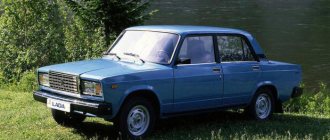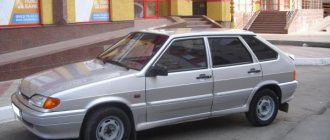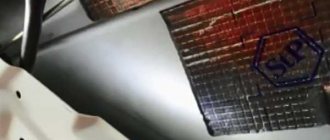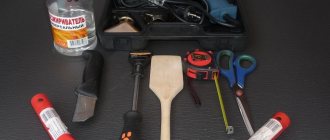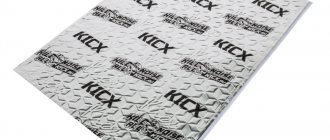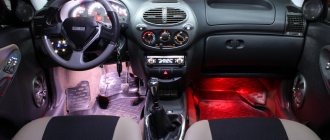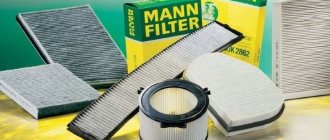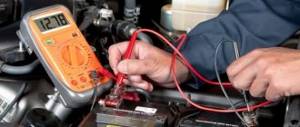What is liquid sound insulation
Until recently, the classic option for reducing noise was to cover the car interior with sheets of material that absorbs sound well. The use of such materials outside is low-tech, since under the influence of external conditions the insulation sheets can peel off.
New technologies in auto chemicals have made it possible to reduce noise levels using a liquid material that is applied to the outer surfaces of the car. It is a mastic that hardens on the surface after application, creating a layer several millimeters thick with plastic properties. Thanks to its elasticity, high-frequency vibrations and noise are well attenuated in such a layer. The overall reduction level can reach 30%.
Stages of floor soundproofing
- Dismantling the interior. The seats, center console (when necessary) and other elements that block access to the floor are removed.
- Dismantling the floor covering.
- Surface cleaning. Dust and dirt are removed with a vacuum cleaner and lint-free wipes. If there are rust spots on the surface, they are cleaned off, and the metal in this area is primed and painted. After this, the floor is degreased. The absence of dirt guarantees excellent adhesion of materials to the surface and resistance to corrosion.
- Applying vibration insulation. This is the first layer that dampens vibrations, converting vibration energy into heat. We recommend using StP Aero Plus (3 mm) or StP Bimast Bomb Premium (4.2 mm).
- Application of sound-absorbing or heat-insulating materials. The choice of material is made by the car owner or installer, based on several factors:
- The need to reduce noise levels or reduce heat exchange with the environment.
- Features of the car design (in some cars it is impossible to use the second layer of materials whose thickness exceeds 4 mm).
Our installation centers use StP Accent Premium (6 mm) and StP Barrier 4 KS (4 mm) materials.
The shelf under the rear seats can always be treated using soft sound-absorbing materials. StP Biplast Premium 15A (armor) (15 mm) or StP Biplast (10 mm) are perfect for this purpose.
- Application of soundproofing materials. These are heavy polymer membranes whose task is to reflect sound waves. It is the third layer that works in the low-frequency range and helps get rid of hum. We recommend using StP Noiseblock (2 mm) or StP Noiseblock (3 mm) depending on the design features of your car.
- Installation of flooring, seats and other elements.
When installing sound insulation, it is important to ensure that the technological holes and wiring are not sealed. Otherwise, noise insulation will need to be removed during future renovations.
Considering the complexity of this work, we recommend using the services of an installation center. Professional soundproofing of the floor is a 100% guarantee of your comfort.
Why liquid sound insulation is better than classic
Soundproofing the underbody of a car from the outside has the following advantages:
- combination of noise insulation and protective properties in one material;
- getting into all hard-to-reach places where the use of classical means is difficult or impossible;
- lighter weight than anti-corrosion combined with internal treatment.
One cannot ignore the inherent disadvantages of these means:
- high price;
- long hardening time.
Liquid sound insulation of the underbody of any car can be performed in conjunction with interior work to further reduce the noise level.
Why is it necessary to soundproof a car?
Manufacturers of modern cars, in the struggle for leading positions in the global car market, strive to make designer beautiful, comfortable, economical and inexpensive cars. The lower the cost, the greater the profit. What can you save on? First of all, this is the thickness of the metal of the body parts. For example, on a ten-year-old car, the average metal thickness was 0.85 mm. Nowadays, this thickness has been reduced to 0.65-0.7 mm. On the one hand, the car becomes lighter, but on the other, when the car moves, more vibration from air flows and poor-quality road surfaces is transmitted to the body.
This can be easily eliminated using vibration isolation. It would be much more effective to install vibration and sound insulation into the empty bodies of cars on the assembly line. But in order to achieve large-scale savings, the manufacturer minimizes its costs for sound insulation of car interiors. Therefore, additional installation of sound insulation in a car has become the norm for almost all classes of cars.
Car sound insulation - advantages:
- A long trip in a car with a high noise level quickly tires and leads to a deterioration in the reaction, as well as irritability of the driver, which negatively affects road safety. After installing additional sound insulation in the car, passive safety increases.
- Installing sound insulation significantly improves the sound quality of even a standard speaker system. Lovers of good sound will immediately feel the difference and will be able to appreciate the benefits of acoustic sound insulation of a car.
- After completing work at the Nikrasoff car service center for additional sound insulation of the car, you will not only receive acoustic comfort, but also feel like you are in a higher class car.
Liquid products for external sound insulation
The materials differ in composition, as well as in the technology of application; let’s look at the main ones.
Rubber bitumen mastics
It contains a bitumen binder and fine rubber crumbs. The soundproofing mixture also includes solvents and plastic organic fillers. Rubber has vibration and noise-absorbing properties. The binder mastic also has plasticity, which improves the quality of the insulation as a whole.
Procedure for applying liquid sound insulation to the bottom
Liquid sound insulation differs in the methods of preliminary surface preparation:
- with mandatory priming;
- without applying primer.
The sequence of work is as follows:
- Mechanical surface cleaning. Produced using water and auxiliary products. The goal is to remove dirt and dust. It is also necessary to remove peeling coatings, as well as rust stains. Loose areas of corrosion are removed with a wire brush, drill attachment or grinder. Complete removal of traces of corrosion is carried out using a rust converter. The technology for using the drug is indicated in the instructions.
- Degreasing with organic solvents.
- Applying primer. Primer compositions improve adhesion - the adhesion of the soundproofing mixture. This reduces the likelihood of the applied layer peeling off the metal.
- Applying sound insulation.
Inside the car
When processing the internal surfaces of the car, remove the trim and interfering attachments. Those places where the composition should not be are covered with plastic film. It is secured with paper tape. It is not advisable to use the usual one, since traces of it are difficult to remove.
Liquid car sound insulation. Theory, types and specific examples.
In recent years, scientists have created many new types of materials. The issue of sound insulation of modern cars has not been ignored either. Why was this needed? Due to the fact that manufacturers are trying to constantly improve vehicle safety, they are experimenting with body geometry and various reinforcing units. And this, in turn, poses difficult tasks in terms of noise reduction. So, for example, if there are small gaps between parts, a conventional sealant cannot be used. Therefore, the modern solution is a liquid type of sound insulation.
In addition, this type of material significantly surpasses its competitors in terms of characteristics. So, it is excellent for external sound insulation of a car, which cannot be said about conventional seals, which absorb moisture and contribute to body corrosion. Therefore, it can safely be called a universal remedy. It is most often used to reduce noise from the underbody and wheel arches of a car.
Thus, by treating the bottom and fender liners of the car with liquid Shumka, you can not only enjoy silence, but also protect these parts of the car from corrosion.
Types of sound insulation
Among the types of these materials, two groups can be distinguished:
- compounds of the first category;
- compounds of the second category.
Let's look at them in more detail.
Composition of the first category. Before applying this type of material to the surface to be treated, it requires additional preparation, namely priming. All this is done to ensure better adhesion of the applied substance to the car body. This type of product is used for external treatment, because it is the wheel arches and the bottom that are easiest to prime and then apply a layer of liquid noise reduction.
Composition of the second category . This type is more practical. It does not require special surface preparation; it is enough to wipe and degrease the treated area. Materials in this category are used mainly to dampen small gaps in the car body.
Application of material
In the manufacture of this material, compositions based on liquid rubber are used as the main component. At the same time, they are diluted with special additives that make them resistant to the external environment (moisture, heat) and physical damage (ingress of stones, sand, salt). They are also chemical interns. It is these additives that provide additional anti-corrosion resistance.
You can apply sound insulation for a car with your own hands, the main thing is to approach this issue competently and study all the details.
As already written above, depending on the category of materials, you will need to treat it either with a simple solvent or with an additional primer. Therefore, when purchasing this product, pay special attention to this point.
Liquid noise insulation can be applied either with an ordinary brush or with a spray bottle. At the same time, we advise you to protect those areas where you do not want this material to come into contact. This can be done using masking tape, which is used when painting cars.
It should be noted that liquid Shumka is applied in two stages (layers). After application, the first layer should dry well, after which the second layer can be applied.
Many craftsmen use this type of noise reduction in combination with seals, this gives an enhanced effect and allows you to get the most out of the manipulations performed.
Processing small gaps
There are times when it is necessary to treat hard-to-reach areas of the body. In these cases, sprayers are used. First, a degreaser is sprayed, after it dries, a second category of liquid desilent is applied.
Specific examples of the most commonly used products
So, in the TOP rating we can highlight:
- noxudol 3100. The material was developed in Sweden and is widely used by domestic craftsmen.
- dinitrol 479;
- Noiseliquidator mastics. This is a two-component composition that is manufactured in Russia at the Standardplast Group of Companies.
This type of material is recommended for use on complex relief surfaces, but it is not used for treating roofs or doors. In fact, it is used mainly for wheel arches. It also has an anti-corrosion effect. Consists of two components: base and hardener. After you have mixed this mastic, you can apply it for 30 - 40 minutes, after which it will begin to harden. Apply manually using a spatula. Recommended layer thickness 2 – 4mm. On average, about 1 kg of material is consumed for 1 arch. The mastic dries within 24 hours.
The main characteristics include:
- Vibration absorption coefficient (VAC) – 0.19 units.
- Specific gravity – 4.09 kg/sq.m.
- Noise reduction level – up to 40% (3dB)
- Rubber-bitumen mastics. This group includes a huge number of mastics that are present on the market. They consist of a solution of bitumen in organic solvents and special types of fillers, to which alkyd resin and plasticizers are added. Rubber or rubber crumbs can often be used as a filler.
Although this type of liquid noise reduction does not have better performance than its competitors, it is clearly cheaper, which makes it quite popular in our country.
When choosing such a material, check with the seller that you are taking it for sound insulation and you need to get a hard surface as a result. Because there are softer options that are used for anti-corrosion treatment.
Reviews of Providence liquid car insulation
Dmitriy
I did noise reduction on a VAZ 2110. I treated the bottom and arches. The result makes me quite happy, the car has become much quieter, of course not twice as much as they promise in the workshops, but the ride has become more pleasant. Plus, I got at least some protection from gravel, otherwise before it felt like I was riding in a tin can.
Ivan
The noise in the cabin has been annoying for a long time, the hum of the tires was especially loud. I decided to do a little experiment and first treated the arches with Noxudol 3100. And on top of it I applied Noxudol Auto-Plastone liquid fender liners. I felt the effect immediately, as soon as I got behind the wheel. In fact, this work can be done in a day, even with your own hands, and you don’t need to go to a service center, but if you don’t have time to do this, then you definitely need to turn to professionals.
Peter
I decided to soundproof the arches in KIARIO. If you think that I will write how great everything went, then you are deeply mistaken. Within an hour I was unhappy that I even started this procedure. Taking the Karcher, I washed the fender liners and, to my great surprise, there was already a factory layer of sound insulation, but during cleaning I damaged it, I had to reapply it. I spent a day and a half on this. After everything had dried and I got behind the wheel, to be honest, I didn’t feel an improvement even by 1 dB. My advice to you is that if you have a factory Shumka, then don’t worry about redoing it, the effect will be minimal.
